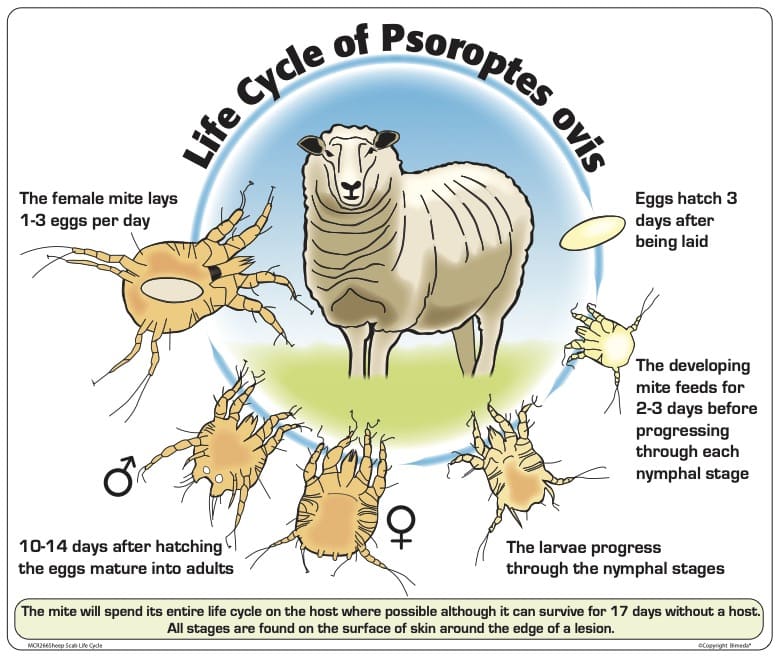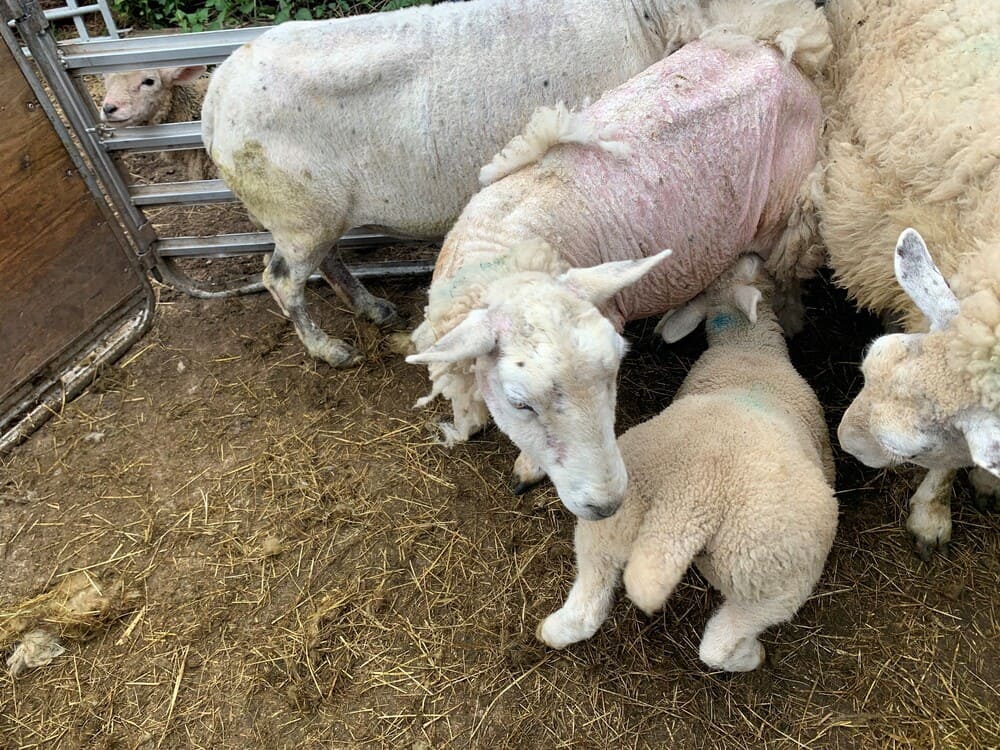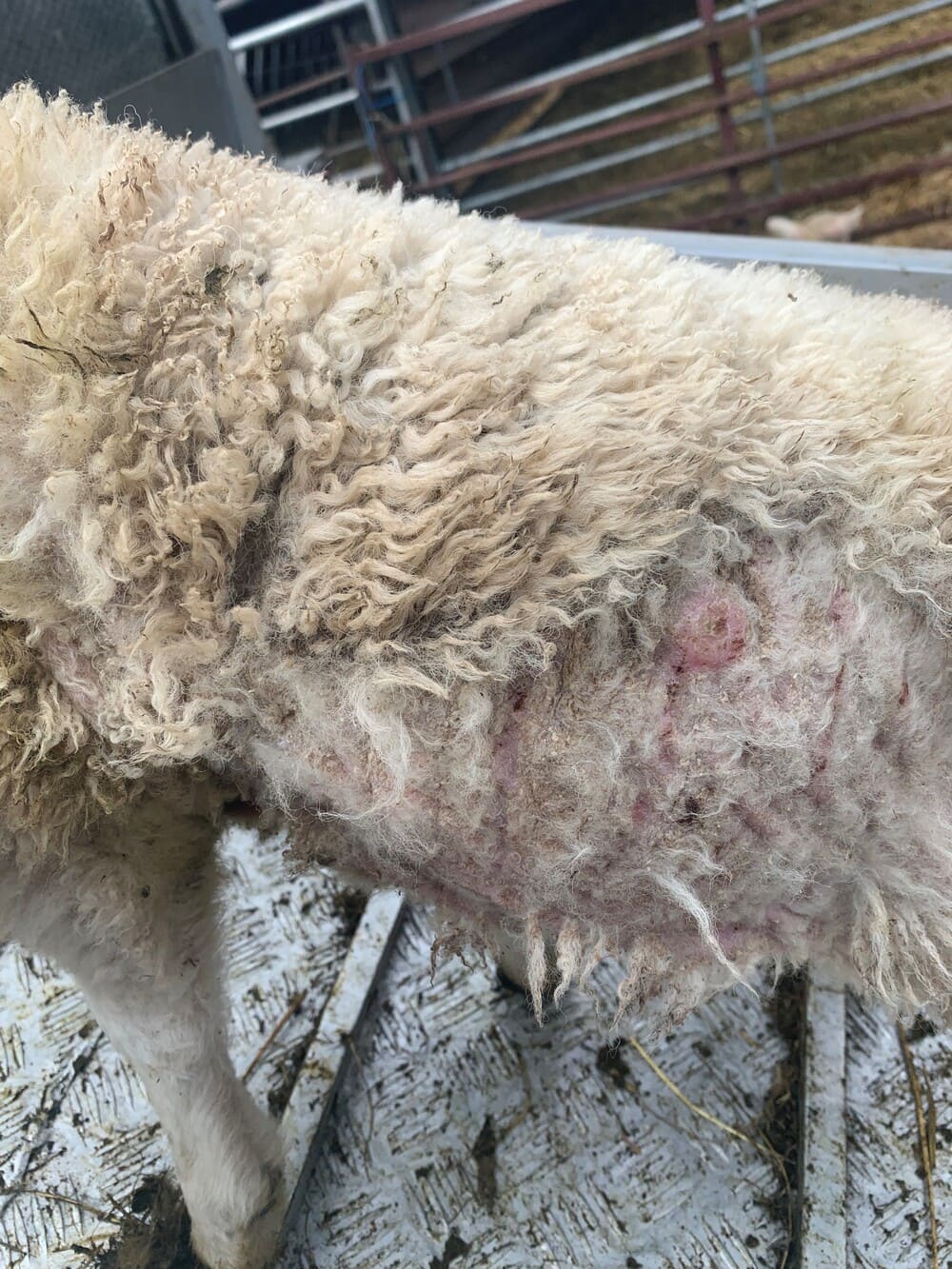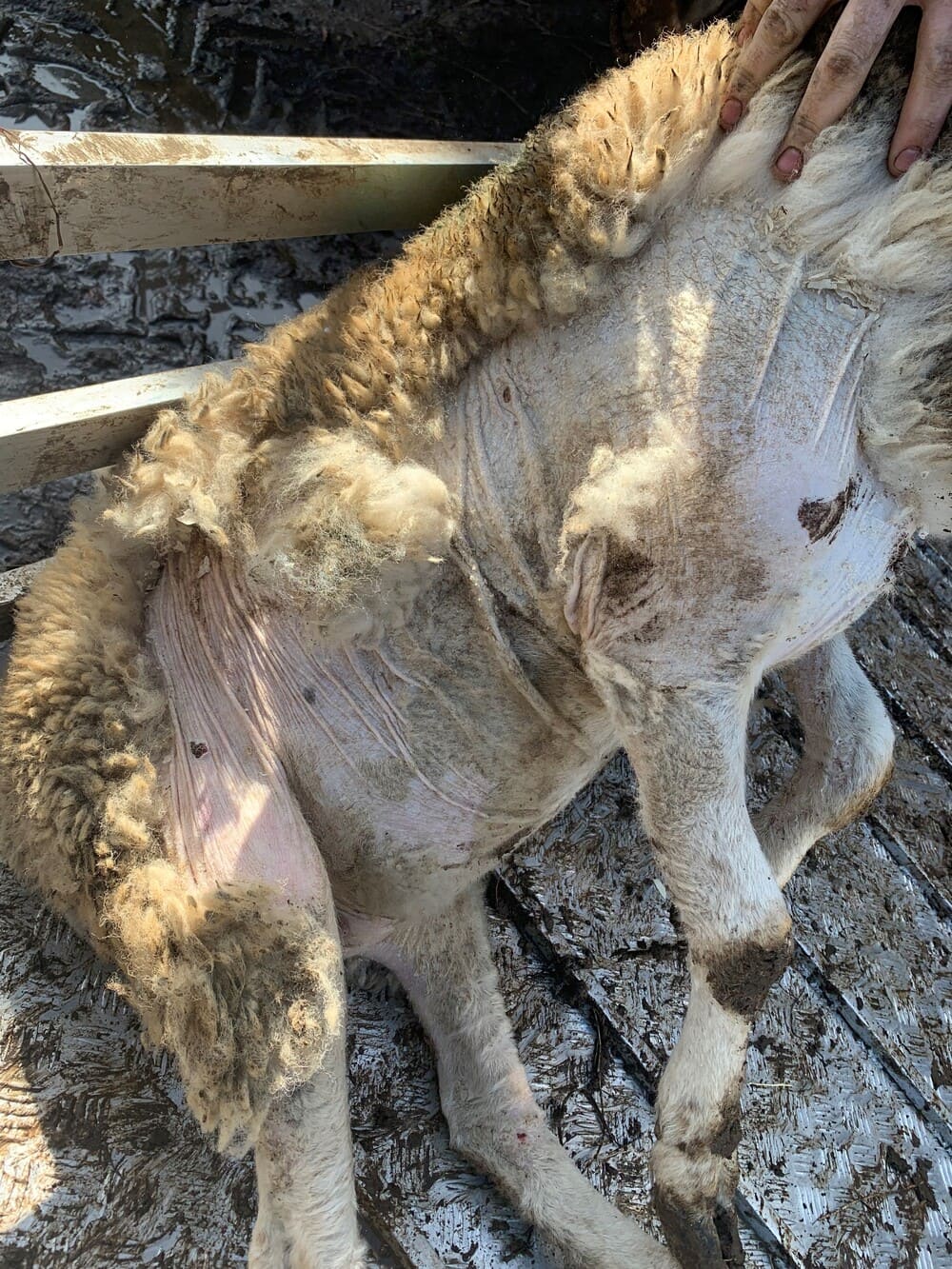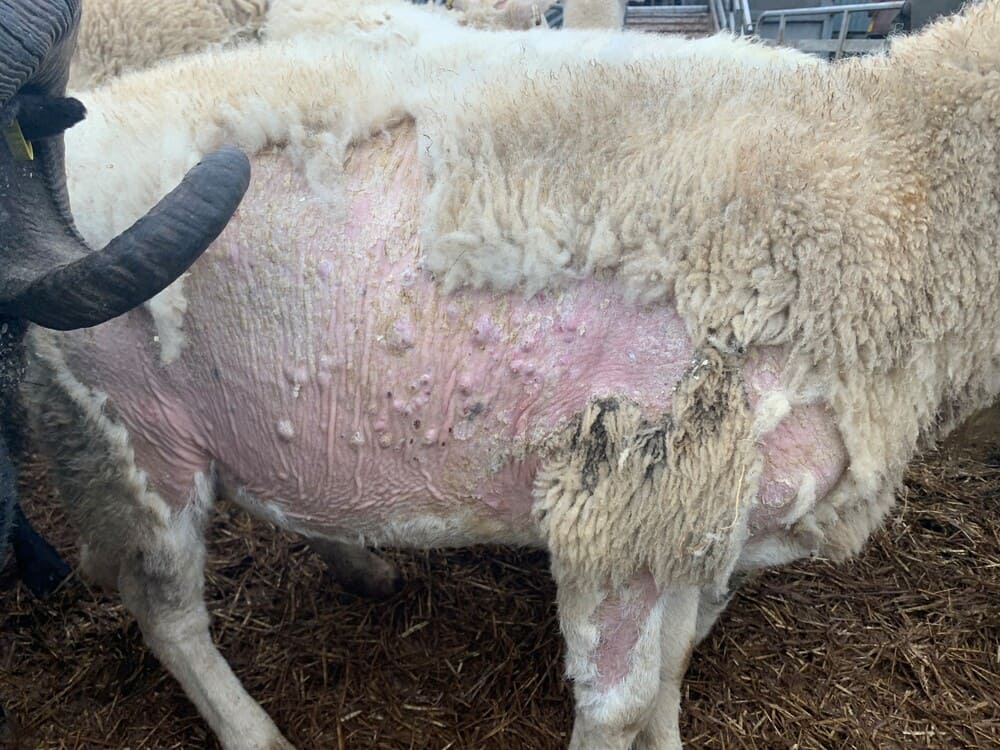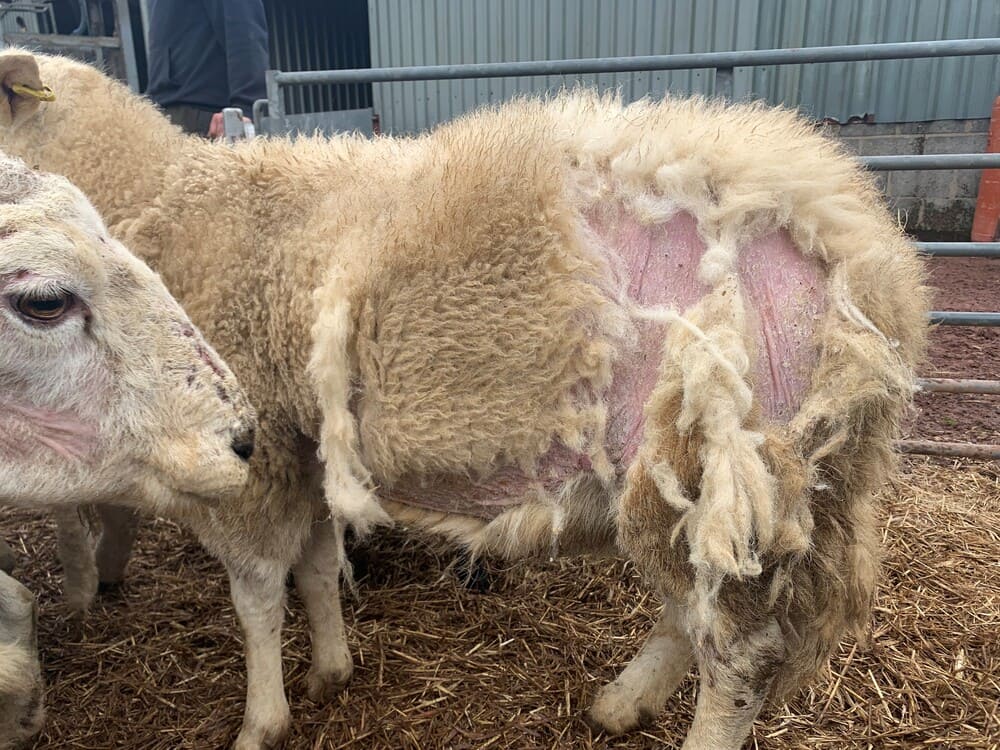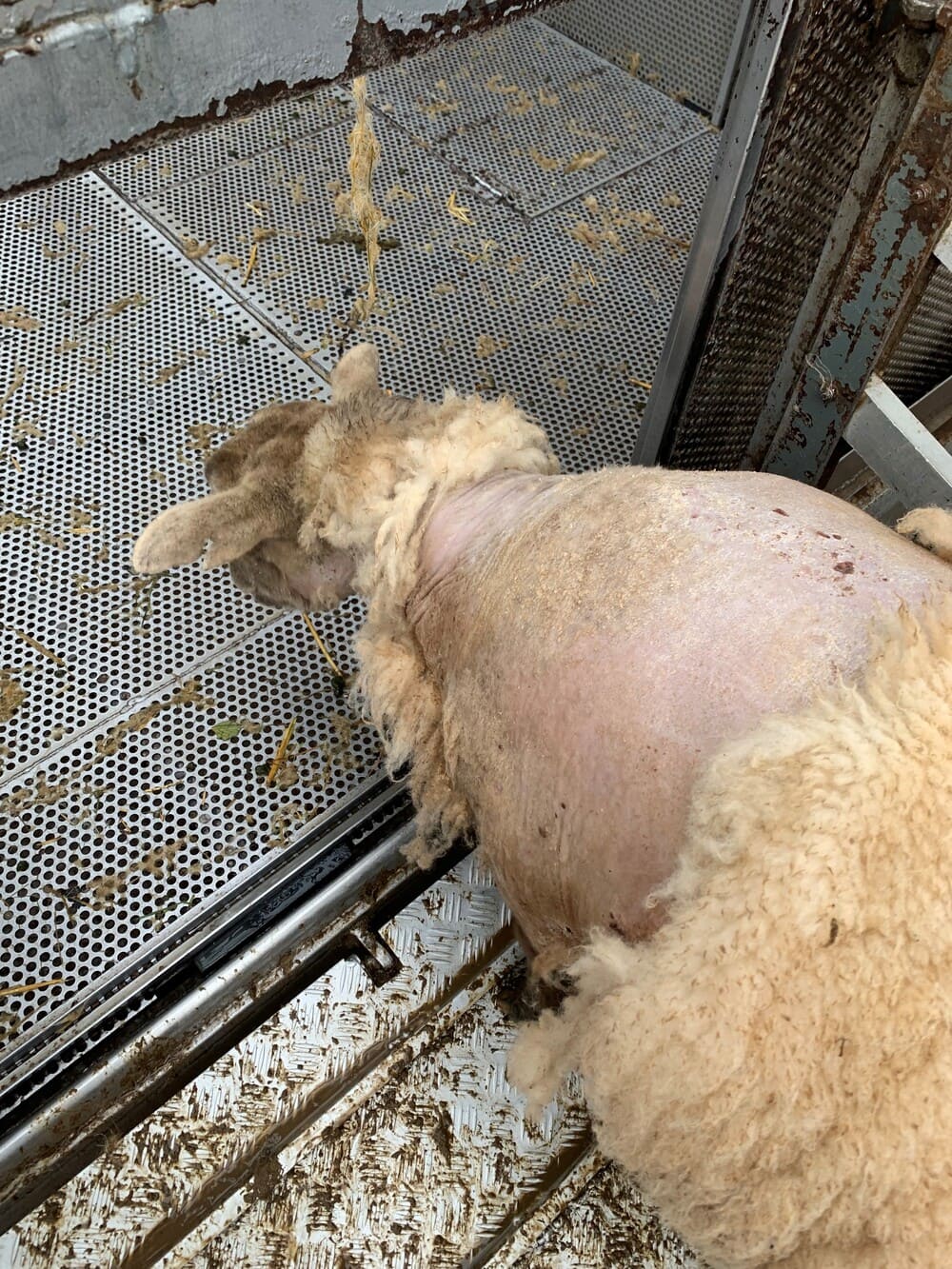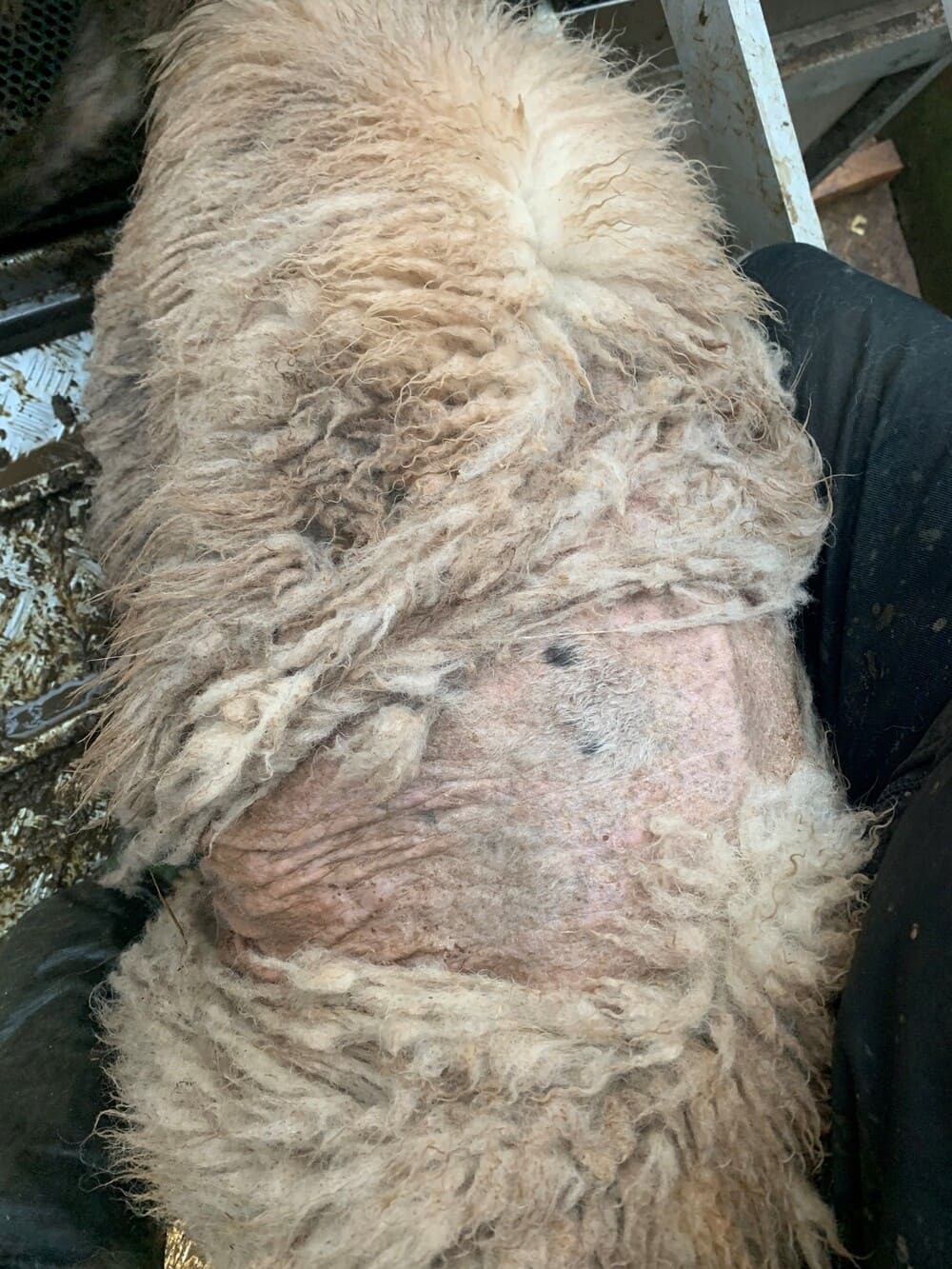Sheep Scab- Increasing in Cost and Incidence
This editorial was provided by Bimeda, makers of Gold Fleece Sheep Dip, 608 mg/ml Concentrate for Dip Emulsion
Sheep scab is estimated to cost the UK sheep sector £78-202 million annually[1]. A disease which was historically under control, and even eradicated at one time before being reintroduced, has now re-established, and increased exponentially with resultant economic and welfare impacts.
Sheep scab disease is caused by the Psoroptes ovis mite which can be transmitted between animals and via the environment on fomites e.g. clothing, equipment which carry infection. Coupled with its ability to survive for up to 17 days in the environment, for example on wool caught in fences, this makes control challenging.
Clinical signs
The mite feeds on debris at the skin surface producing faeces which elicit a severe allergic reaction on the sheep host, causing skin lesions and intense itching.
While many are familiar with the classic signs of severe ‘scabby lesions’, nibbling and scratching due to intense itching, fewer are familiar with the signs of chronic sheep scab disease, and unaware that long-term infections may cause no obvious clinical signs at all.
Biosecurity
This is particularly critical to consider when introducing new animals into the flock. Animals which have been repeatedly exposed to sheep scab disease are likely to have developed an immune response. This immunity will not eradicate disease, and will not prevent transmission between animals, but will dampen or even prevent obvious clinical signs.
All new incoming stock should be considered at risk of carrying scab and we now have a new diagnostic test to determine risk status.
Diagnosis
Skin scraping has been widely used for diagnosis and offers a quick, cost-effective solution. Your veterinary surgeon can carry out a skin scrape, and deliver results rapidly, facilitating ongoing management.
Even where infestation is present, mites may not be detected on skin scrapes, particularly if low mite numbers are present. Moredun have developed a sheep scab (blood) ELISA test which is available commercially via Biobest Laboratories and Wales Veterinary Science Centre.
Infested animals produce antibodies and this test can detect those antibodies. A positive result informs us that the animal has been exposed but interpretation is important as animals which have been successfully treated recently may still be positive. A negative result tells us that exposure is unlikely. Your vet will be able to advise on the results obtained.
The greatest benefit comes from using the test on a flock level basis (screening 12 animals per management group).
Treatment & management
If sheep scab is diagnosed, engage with your vet or RAMA (SQP) to discuss treatment options.
There are currently two treatment groups available- plunge dipping with organophosphate dip or injecting with Macrocyclic Lactones (group 3 clear wormers).
When determining which approach to take, consider and discuss the following with the prescriber:
- How will different treatments impact my roundworm control plan?
- Is clean housing/pasture available or is a product which prevents reinfection required?
- What is the administration protocol and can it be facilitated?
- How will the withdrawal impact management e.g. drawing lambs
- For dipping, is there an ‘Award in the Safe Use of Sheep Dip’ held and responsible disposal method in place (according to the local environmental agency). If not, could a mobile dipping contractor be utilised?
- How has scab likely to have been introduced and who do we need to inform that may also be affected e.g. neighbours?
Due to the different protocols (1 injection vs 2), different routes of administration (subcutaneous vs intramuscular) and prevention vs treatment only products, it is easy to make mistakes which can result in treatment failure. Double check before administering that they are being used correctly.
Table 1: Medicines licenced for the control of sheep scab in the UK:
| Category | Active | Additional Information |
|---|---|---|
| Organophosphate (plunge dipping) |
Diazinon | Treatment: dip once Prevention: 60 days |
| Macrocyclic lactones (injectable) |
Ivermectin | Treatment: two injections 7 days apart Prevention: none Route: subcutaneous |
| Doramectin | Treatment: one injection Prevention: none Route: intramuscular |
|
| Moxidectin 1%[2] | Treatment: two injections 10 days apart Prevention: 28 days Route: subcutaneous |
|
| Moxidectin 2% | Treatment: one injection Prevention: 60 days Route: subcutaneous |
Diazinon has been used in showers/jetters however the product is not licenced for this use and there are numerous concerns including:
- Ability of mites to survive in ear canals facilitating reinfection
- Dip concentration in fleeces following showering has been demonstrated as significantly lower in trial work vs plunge dipping[3] which could result in treatment failure and a reduced duration of protection.
- Exposure of mites to sub-lethal concentrations may lead to resistance.
- Harmful aerosol generated may increase risk of inhalation
- Medicines must only be used in accordance with their licenced use
Resistance
The first evidence of sheep scab mite resistance to injectable treatments was confirmed in 2018, although the extent of this issue is not known. The good news is that sheep scab mites which are resistant to injectable treatments have been demonstrated as susceptible to plunge dipping with diazinon. This allows us to eliminate the resistant sheep scab mites from the flock entirely.
Injectables ML treatments are also used to target gastrointestinal roundworms. Using injectables to target scab, when there is a low worm burden which does not require treatment, may also speed up the development of roundworm resistance. With this in mind, when determining which product to utilise, consideration should be given to how this will impact the roundworm population. If the roundworm burden is low, and does not require treatment, consider utilising plunge dipping which only targets external parasites.
If you utilise any product for treatment, and clinical signs persist more than 2 weeks after treatment, report the issue to the prescriber and manufacturer for guidance. Do not administer an additional treatment without seeking guidance.
To date, no resistance of the scab mite to diazinon has been confirmed in the UK although it has been identified elsewhere globally which is why we must use scab control products responsibly to reduce the rate of development of resistance.
Summary
Numerous control schemes to tackle scab and are being rolled out across the UK. For up-to-date information on management of sheep scab disease, consult the Sustainable Control of Worms in Sheep (SCOPS) website
[1] The high cost of sheep scab. Emily J Nixon,Richard Wall,Hannah Rose Vineer,Lesley Stubbings. Vet Record, 2020.
[2] Do not use in animals vaccinated against footrot
[3] M. H. Clear , P. R. Kettle & T. J. Hynes (1982) Retention of diazinon in wool on Romney and Drysdale sheep and in hair on goats, New Zealand Journal of Experimental Agriculture, 10:1, 19-21, DOI: 10.1080/03015521.1982.10427836
Use Medicines Responsibly. Noah.co.uk/responsible. Gold Fleece Sheep Dip, 608 mg/ml Concentrate for Dip Emulsion is a POM-VPS medicine and contains 608mg/ml dimpylate (diazinon). It is an organophosphate ectoparasiticide licenced for use in sheep for the prevention and treatment of Blowfly Strike, Ticks, Keds, Lice and Scab infestations. A prescription may only be supplied when the request to prescribe is accompanied by a Certificate of Competence in the ‘Safe Use of Sheep Dip’ number. This product should never be used via shower or jetter systems- only plunge dipping. Further information must be sought from the medicine prescriber. Further product information is available on the pack, the product data sheet or SPC. Bimeda can be contacted on +44 (0) 1248 725 400 or This email address is being protected from spambots. You need JavaScript enabled to view it..
Date editorial prepared: 7 July 2022
Rachel Mallet is a Veterinary Surgeon and Professional Services Vet at Bimeda Animal Health providing technical support to vets, SQPs and farmers in the UK. Rachel is passionate about animal health and welfare and driving best practice and preventative medicine for sustainable protein production.
